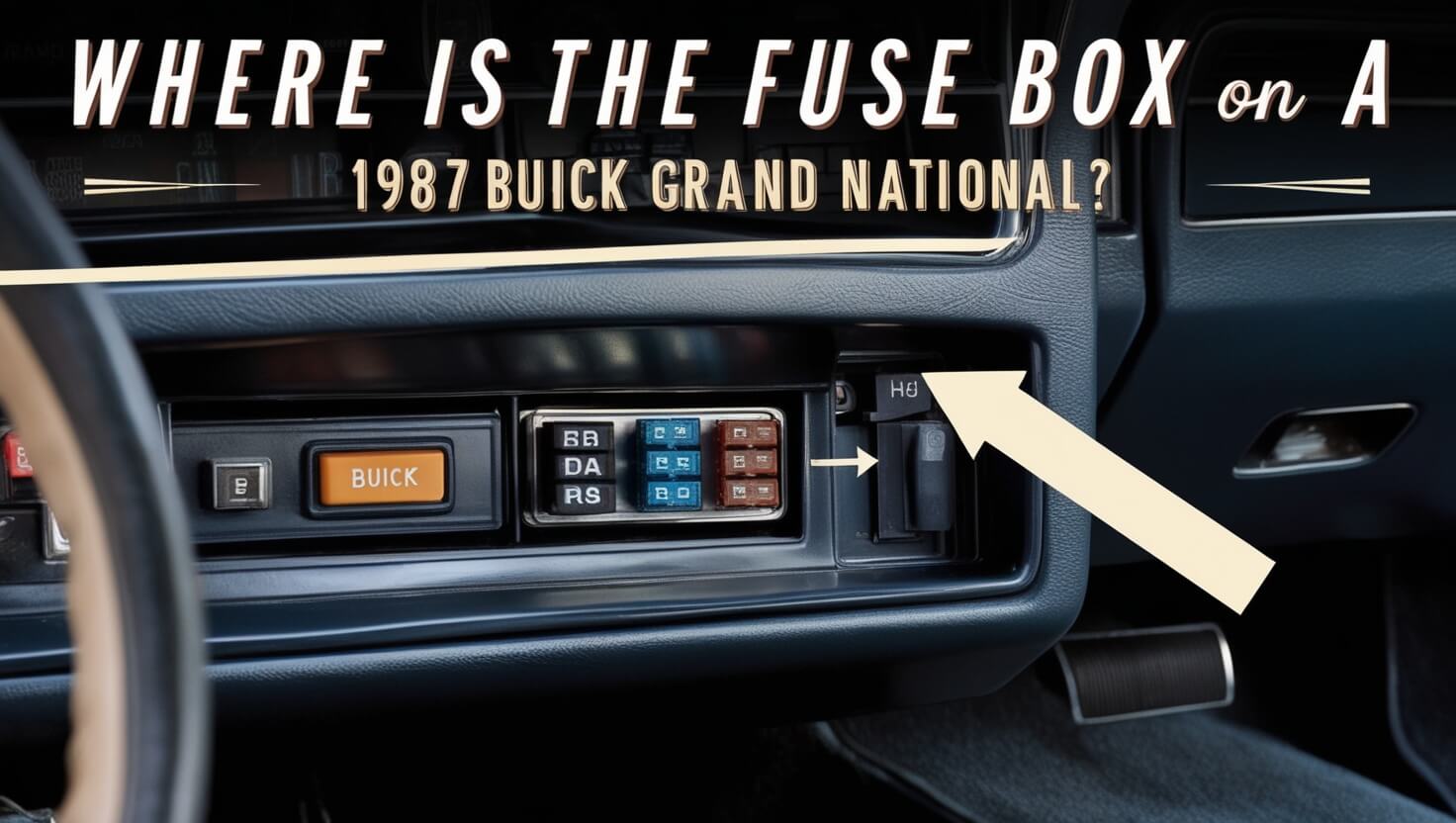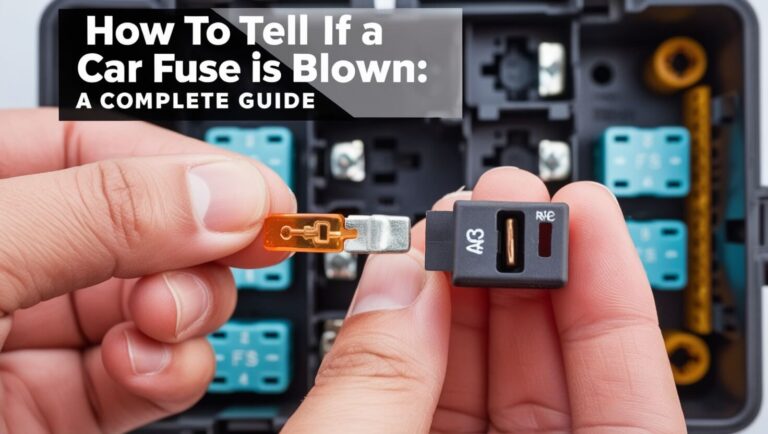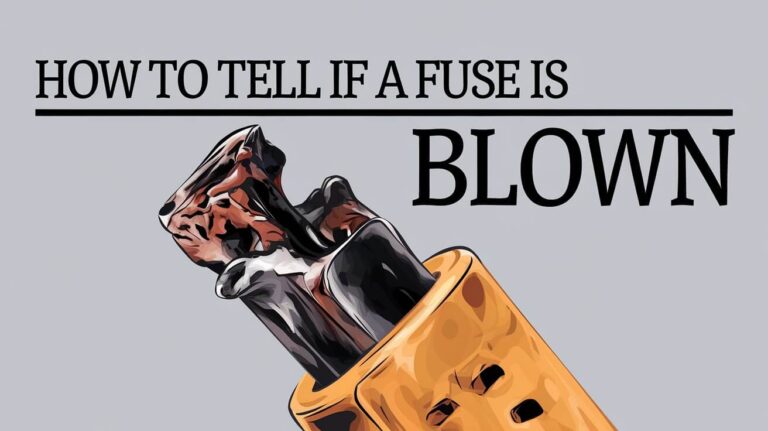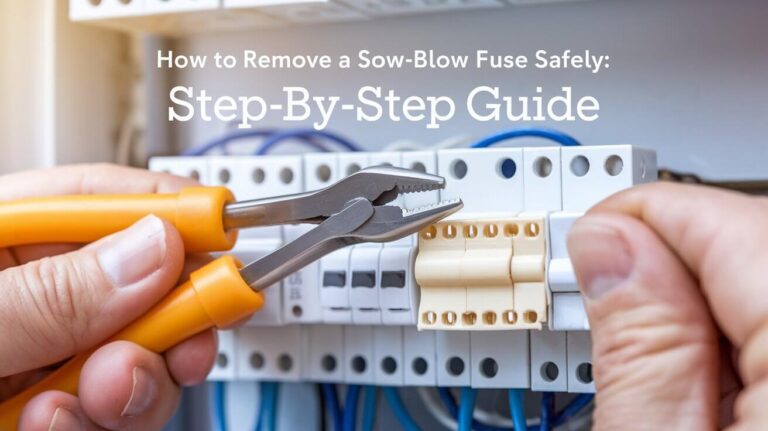Where is the Fuse Box on a 1987 Buick Grand National?

The fuse box on the 1987 Buick Grand National is located under the dashboard on the driver’s side, positioned near the brake pedal. For easy access to the fuse box, open the driver’s door and look just under the dash in front of the seat. This location is typical for many vehicles of this era and places the fuses conveniently near essential electrical components, ensuring easy access for maintenance and repairs. Now let’s dive deeper into everything you need to know about the fuse box, its layout, and essential maintenance tips to keep your Buick Grand National running smoothly.
Overview of the 1987 Buick Grand National’s Fuse Box
What makes the fuse box essential for your 1987 Buick Grand National? The fuse box is a critical component for managing the electrical system, protecting circuits, and ensuring that each component functions safely. Fuses are designed to interrupt electrical flow if a circuit overloads, preventing damage to the system and reducing the risk of fire. In the Grand National, the fuse box regulates the electrical flow to components like the radio, lights, fuel system, and more, making it a fundamental part of vehicle maintenance.
What is a Fuse Box, and Why is it Important?
The fuse box is an assembly of fuses that control power to different electrical circuits in the vehicle. Each fuse acts as a protective measure, with each designated to a specific function—whether it’s for the headlights, interior lights, fuel pump, or radio. For a high-performance vehicle like the Buick Grand National, managing power safely and consistently is essential for preserving the quality and function of the vehicle’s features.
Quick Answer: Fuse Box Location in the 1987 Buick Grand National
The primary fuse box on the 1987 Buick Grand National is under the driver’s side dashboard, directly near the brake pedal. You’ll need to reach up slightly from the driver’s side floor area to access it, and if you’re facing the dashboard, it’s typically toward the left. This location, under the dash and near the brake pedal, is designed for easy access during maintenance without compromising the aesthetics or layout of the interior.
Detailed Location Guide
Step-by-Step Guide to Accessing the Fuse Box
Here’s a simple step-by-step guide to finding and accessing the fuse box in your Grand National:
- Open the Driver’s Door: Stand outside the vehicle and open the driver’s door.
- Locate the Fuse Box Near the Dash: Look directly under the dashboard in front of the driver’s seat. You may need to crouch slightly to see the box.
- Identify the Fuse Cover: Most fuse boxes are protected by a removable cover. Look for a plastic or metal cover that can be easily lifted or removed to access the fuses inside.
- Remove the Cover Carefully: Once you locate the cover, carefully remove it by pulling or unscrewing any fasteners. Be cautious as some fuse boxes may have delicate plastic covers that can break with excessive force.
Alternative Location for Secondary Fuses
In some vehicles, there are secondary fuse boxes or small fuse panels located in other areas, such as under the hood or in the trunk. For the 1987 Buick Grand National, however, the primary fuse box located under the dashboard is the central hub for nearly all essential fuses and relays.
Understanding the Fuse Layout and Diagram
Diagram of the Fuse Box in a 1987 Buick Grand National
While the layout of each fuse box can differ slightly depending on the vehicle’s make and model, you’ll typically find a diagram on the inside cover of the fuse box itself or in the vehicle’s owner’s manual. This diagram is crucial for identifying which fuse controls each component. For the Buick Grand National, the fuse layout typically includes positions for critical systems like the fuel pump, ignition system, lights, and accessories like the radio.
Important Fuses in the 1987 Buick Grand National
Each fuse in the Grand National plays an important role in maintaining the vehicle’s function and safety. Here are some key fuses and what they control:
- Fuel System Fuse: Powers the fuel pump and injectors, ensuring a stable fuel supply to the engine.
- ECM and Ignition Fuses: Critical for the vehicle’s start-up process and engine management. If either fuse blows, you might experience starting issues or engine misfires.
- Interior & Accessory Fuses: Controls various in-car amenities such as the radio, power windows, and interior lights. These fuses enhance driver and passenger comfort by providing power to non-essential but convenient features.
Visual Indicators of Blown Fuses and How to Replace Them
A blown fuse will usually display a visible gap in its metal strip or show dark, burnt marks inside the fuse casing. Here’s a quick replacement guide:
- Step 1: Locate the blown fuse using the diagram on the fuse box cover or in the owner’s manual.
- Step 2: Pull the fuse out gently using a fuse puller or a pair of pliers.
- Step 3: Inspect the fuse for any visible signs of damage. If it’s blown, replace it with a fuse of the same amperage.
- Step 4: Place the new fuse in the slot and ensure it’s securely fitted.
Common Fuse-Related Issues
Symptoms of a Blown Fuse in a 1987 Buick Grand National
Blown fuses can create a range of issues depending on which circuit is affected. Common symptoms include:
- Electrical Issues: Non-functional lights, radio, or power windows due to lack of current flow.
- Engine and Drivability Problems: Starting difficulties or erratic engine behavior if an ignition or ECM fuse is blown.
Diagnosing Fuse Box Issues in the Buick Grand National
For precise diagnostics, use a multimeter to test each fuse. Set the multimeter to measure resistance and place the leads on either side of the fuse. A low resistance reading indicates the fuse is intact, while high or no resistance shows it’s blown. Other common issues include corroded contacts or loose connections, which can disrupt power flow and lead to intermittent electrical problems.
Preventative Maintenance and Upgrades
Tips to Maintain the Fuse Box and Electrical System
To keep your fuse box and electrical system in top condition:
- Regular Inspection: Periodically check the fuse box for signs of corrosion, especially around the fuse terminals.
- Replace Worn-Out Fuses: Old fuses may degrade over time, so replacing them periodically helps prevent future issues.
- Secure Connections: Ensure all fuses and wires are securely attached, as loose connections can lead to electrical issues.
Upgrades for Modern Reliability in the 1987 Buick Grand National
For enthusiasts looking to maintain or enhance the vehicle’s performance, consider these upgrades:
- Circuit Breaker Upgrades: Some drivers opt for circuit breakers instead of traditional fuses, as these can reset automatically and reduce maintenance needs.
- Fuel Pump Hotwire Kit: A hotwire kit can stabilize voltage to the fuel pump, improving performance and fuel efficiency.
- Modern Fuse Box Relocation: Some owners relocate the fuse box to a more convenient location for easier access during repairs.
Additional Resources for Buick Grand National Owners
Recommended Manuals and Guides
For those who want a deeper understanding, there are resources like OPGI’s wiring and component diagram booklets. Additionally, factory service manuals offer detailed information about the fuse layout and other essential repair guidelines.
Online Communities and Expert Forums
Buick Grand National owners can find support and resources through online communities like TurboBuick and other Buick forums. These forums are invaluable for sharing maintenance tips, troubleshooting advice, and discussing modifications with experienced owners.
Conclusion
The 1987 Buick Grand National’s fuse box, located under the driver’s side dashboard near the brake pedal, is an essential part of the vehicle’s electrical system. Regular inspection, prompt fuse replacement, and an understanding of each fuse’s function can help keep your Grand National in peak condition. For Buick enthusiasts, ongoing maintenance and minor upgrades can ensure the Grand National’s reliability and performance remain exceptional. Whether you’re tackling minor electrical repairs or enhancing your vehicle’s performance, knowing your way around the fuse box is essential.




